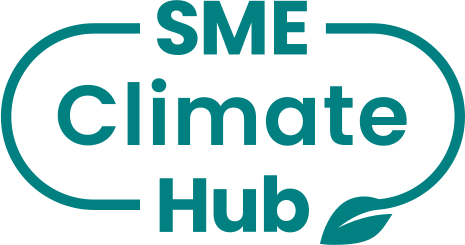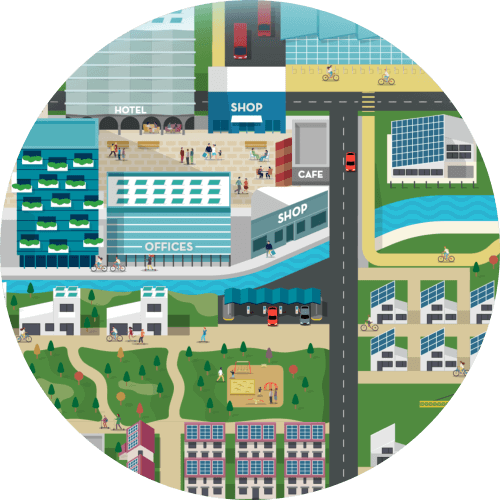Se de steg ditt företag kan ta mot en mer hållbar framtid genom våra öppna resurser.
Perlage Winery's Climate Report
Introduction *
Commitment And Targets *
Own emissions *
Value chain emissions *
(optional)Actions and plans to reduce emissions *
Climate Solutions *
(optional)Management and strategy *
(optional)Results, challenges and outlook *
Introduction *
reporting year
*2021
number of employees in the reporting year
*21
Commitment And Targets *
net zero target year
*2050
Base year
*2021
comment on your net zero targets
*We are committed to net zero targets in different ways: training of employees and research of new technologies.
near-term scope 1 target
*50
target year
*2030
near-term scope 2 target
*50
target year
*2030
near-term scope 3 target
*30
target year
*2030
comment on your near-term targets
*We are aware that the reduction of SCOPE 3 emissions are the most difficult task to reach, but we are striving to look for a solutions.
Own emissions *
scope 1 emissions
scope 1 emissions (metric tons co2e)
*87.7
own facilities
*43.7
metric tons CO2eown vehicles
*44
metric tons CO2escope 2 emissions
scope 2 emissions (metric tons co2e)
*143.6
total energy consumption (kwh)
*553470
renewable energy
*19
purchased electricity
*143.6
metric tons CO2eRenewable electricity (%)
19
purchased steam
*N/A
Renewable electricity (%)
-
purchased heating
*N/A
Renewable electricity (%)
-
purchased cooling
*N/A
Renewable electricity (%)
-
Value chain emissions (optional) *
scope 3 emissions
scope 3 emissions (metric tons co2e)
*2770.5
supply chain related - upstream emissions
purchased goods and services
*1000
metric tons CO2ecapital goods
*Not measured
fuel and energy related activities
*18.3
metric tons CO2etransportation and distribution (upstream)
*27.8
metric tons CO2ewaste in operations
*0.564
metric tons CO2ebusiness travel
*0.676
metric tons CO2eemployee commuting
*29.6
metric tons CO2eleased assets (upstream)
*N/A
customer related - downstream emissions
transportation and distribution (downstream)
*800
metric tons CO2eprocessing of sold products
*N/A
use of sold products
*Not measured
end-of-life treatment of products
*15.5
metric tons CO2eleased assets (downstream)
*N/A
franchises
*N/A
investments
*Not measured
List any sources of emissions excluded:
*We excluded emissions associated with: production of capital goods; use phase of the organization's products, including the distribution phase from the final retailer to the consumer, use and disposal of the finished product including packaging.
describe the calculation methodology and comment on accuracy:
*The following documents have been taken as a reference to draw up this regulation: ➢ VIVA Technical Specification 2014/1.1 and VIVA Regulation 2016 2.0; ➢ ISO 14064-1:2018 - Greenhouse gases - Part 1: Specification with guidance at the organization level for quantification and reporting of greenhouse gas emissions and removals. ➢ Suggestions for updating the Organization Environmental Footprint (OEF) method, Publications Office of the European Union – Publication date: 2019 ➢ Aalde et al. 2006 Chapter 2: Generic methodologies applicable to multiple land-use categories. In 2006 IPCC Guidelines for National Greenhouse Gas Inventories, S. Eggleston, L. Buendia, K. Miwa, T. Ngaraand K. Tanabe (eds.). As regards accuracy, all data are immune to methodical errors or omissions.
Actions and plans to reduce emissions *
Scope 1 Actions
own facilities
No
-
own vehicles
Yes
We are going to join a training to understand how to reduce emissions from vehicles.
own processes
No
-
scope 2 actions
purchased electricity
Yes
We are going to plan an integration of further 100 kW of FV panels on the roof of the company.
purchased steam
N/A
-
purchased heating
N/A
-
purchased cooling
N/A
-
scope 3 actions
supply chain related (upstream)
purchased good and services
*Yes
We are working at sustainable packaging (like weight of bottles)
capital goods
*No
-
fuel and energy related activities
*No
-
transportation and distribution (upstream)
*No
-
waste in operation
*No
-
business travel
*No
-
employee commuting
*No
-
upstream leased assets
*N/A
-
customer related (downstream)
i have asked my suppliers to halve emissions before 2030 and join the un-backed race to zero campaign
*No
i have communicated my commitment and actions to my business customers and asked them to join the un race to zero
*No
Climate Solutions (optional) *
What percentage of your total revenue comes from sales of climate solutions?
*100
Provide descriptions/names of your climate solutions:
*We produce organic wine that is a product which use natural subastances during cultivation phase, compost which increases the quantity of CO2 absorbed, and low water for irrigation.
Management and strategy (optional) *
Results, challenges and outlook *

Perlage Winery's Climate Report
Perlage Winery's Climate Report - 2021
Introduction *
reporting year
*2021
number of employees in the reporting year
*21
Commitment And Targets *
net zero target year
*2050
Base year
*2021
comment on your net zero targets
*We are committed to net zero targets in different ways: training of employees and research of new technologies.
near-term scope 1 target
*50
target year
*2030
near-term scope 2 target
*50
target year
*2030
near-term scope 3 target
*30
target year
*2030
comment on your near-term targets
*We are aware that the reduction of SCOPE 3 emissions are the most difficult task to reach, but we are striving to look for a solutions.
Own emissions *
scope 1 emissions
scope 1 emissions (metric tons co2e)
*87.7
own facilities
*43.7
metric tons CO2eown vehicles
*44
metric tons CO2escope 2 emissions
scope 2 emissions (metric tons co2e)
*143.6
total energy consumption (kwh)
*553470
renewable energy
*19
purchased electricity
*143.6
metric tons CO2eRenewable electricity (%)
19
purchased steam
*N/A
Renewable electricity (%)
-
purchased heating
*N/A
Renewable electricity (%)
-
purchased cooling
*N/A
Renewable electricity (%)
-
Value chain emissions (optional) *
scope 3 emissions
scope 3 emissions (metric tons co2e)
*2770.5
supply chain related - upstream emissions
purchased goods and services
*1000
metric tons CO2ecapital goods
*Not measured
fuel and energy related activities
*18.3
metric tons CO2etransportation and distribution (upstream)
*27.8
metric tons CO2ewaste in operations
*0.564
metric tons CO2ebusiness travel
*0.676
metric tons CO2eemployee commuting
*29.6
metric tons CO2eleased assets (upstream)
*N/A
customer related - downstream emissions
transportation and distribution (downstream)
*800
metric tons CO2eprocessing of sold products
*N/A
use of sold products
*Not measured
end-of-life treatment of products
*15.5
metric tons CO2eleased assets (downstream)
*N/A
franchises
*N/A
investments
*Not measured
List any sources of emissions excluded:
*We excluded emissions associated with: production of capital goods; use phase of the organization's products, including the distribution phase from the final retailer to the consumer, use and disposal of the finished product including packaging.
describe the calculation methodology and comment on accuracy:
*The following documents have been taken as a reference to draw up this regulation: ➢ VIVA Technical Specification 2014/1.1 and VIVA Regulation 2016 2.0; ➢ ISO 14064-1:2018 - Greenhouse gases - Part 1: Specification with guidance at the organization level for quantification and reporting of greenhouse gas emissions and removals. ➢ Suggestions for updating the Organization Environmental Footprint (OEF) method, Publications Office of the European Union – Publication date: 2019 ➢ Aalde et al. 2006 Chapter 2: Generic methodologies applicable to multiple land-use categories. In 2006 IPCC Guidelines for National Greenhouse Gas Inventories, S. Eggleston, L. Buendia, K. Miwa, T. Ngaraand K. Tanabe (eds.). As regards accuracy, all data are immune to methodical errors or omissions.
Actions and plans to reduce emissions *
Scope 1 Actions
own facilities
No
-
own vehicles
Yes
We are going to join a training to understand how to reduce emissions from vehicles.
own processes
No
-
scope 2 actions
purchased electricity
Yes
We are going to plan an integration of further 100 kW of FV panels on the roof of the company.
purchased steam
N/A
-
purchased heating
N/A
-
purchased cooling
N/A
-
scope 3 actions
supply chain related (upstream)
purchased good and services
*Yes
We are working at sustainable packaging (like weight of bottles)
capital goods
*No
-
fuel and energy related activities
*No
-
transportation and distribution (upstream)
*No
-
waste in operation
*No
-
business travel
*No
-
employee commuting
*No
-
upstream leased assets
*N/A
-
customer related (downstream)
i have asked my suppliers to halve emissions before 2030 and join the un-backed race to zero campaign
*No
i have communicated my commitment and actions to my business customers and asked them to join the un race to zero
*No
Climate Solutions (optional) *
What percentage of your total revenue comes from sales of climate solutions?
*100
Provide descriptions/names of your climate solutions:
*We produce organic wine that is a product which use natural subastances during cultivation phase, compost which increases the quantity of CO2 absorbed, and low water for irrigation.
Management and strategy (optional) *
Results, challenges and outlook *
Not sure how to start?
See the steps you can take and get help building a plan to cut your business emissions today.
¿No estás seguro de por dónde empezar?
Revisa los pasos que puedes dar y obtén ayuda para elaborar un plan para reducir las emisiones de tu empresa hoy mismo.
لست متأكداً كيف تبدأ؟
اطلع على الخطوات التي يمكنك اتخاذها واحصل على المساعدة في وضع خطة لخفض انبعاثات شركتك اليوم.
Vous ne savez pas par où commencer ?
Découvrez les mesures que vous pouvez prendre et obtenez de l’aide pour élaborer un plan pour réduire les émissions de votre entreprise dès aujourd’hui.
Ready to commit to lower emissions?
It’s easy to make the commitment. Just complete a form sharing your intent to reduce your emissions.
You’ll earn public recognition for taking the first step.
¿Listo para comprometerte a reducir tus emisiones?
Es fácil comprometerse. Solo tienes que completar un formulario compartiendo tu intención de reducir tus emisiones.
Ganarás reconocimiento público por tomar este primer paso.
هل أنت مستعد للالتزام بتقليل الانبعاثات؟
الالتزام سهل. ما عليك سوى تعبئة نموذج لمشاركة عزمك على تقليل انبعاثاتك.
سوف تحظى باعتراف عام باتخاذك الخطوة الأولى.
Prêt à vous engager pour réduire les émissions ?
S’engager est simple. Il suffit de remplir un formulaire indiquant votre intention de réduire vos émissions.
Vous gagnerez une reconnaissance publique pour avoir fait le premier pas.
Register now to use our tools
Register now to use our tools

Håll dig uppdaterad!
Anmäl dig till vårt nyhetsbrev för att hålla dig uppdaterad med de senaste klimatutvecklingarna.
Logga in
Don't have an account? Create account to access our tools or make the SME Climate Commitment
Logga in
Don't have an account? Create account to access our tools or make the SME Climate Commitment
Logga in
Don't have an account? Create account to access our tools or make the SME Climate Commitment
Forgot password?
Please enter your email address. You will receive a link to create a new password via email.

 Go back
Go back

